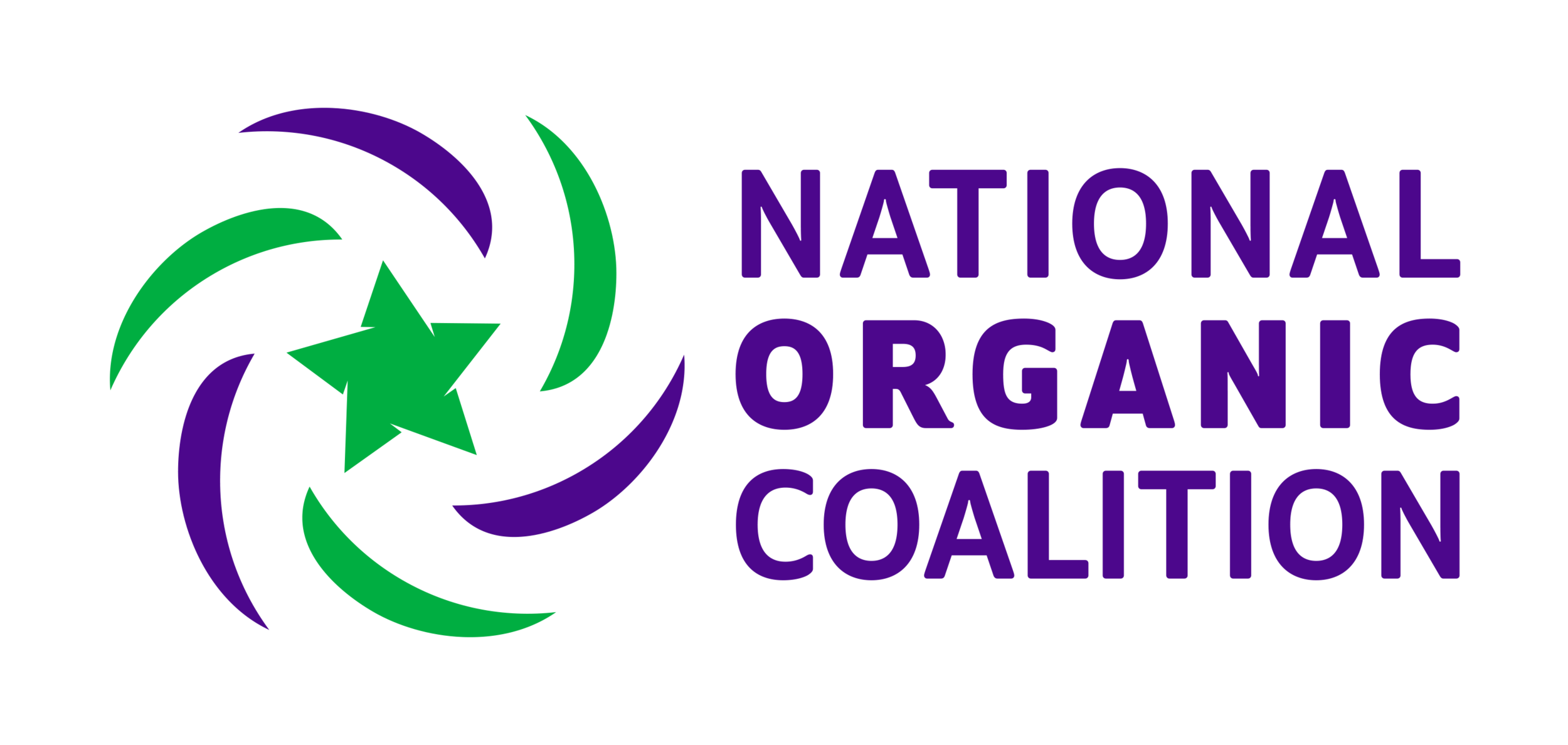BENEFITS OF ORGANIC
Organic agriculture is a regenerative system that has the potential to address multiple crises facing our society, including climate change, health, and economic challenges. Organic regulations require farmers to use soil building practices, such as crop rotations, cover crops, and pastured grazing for livestock, which have been proven to improve soil health and increase carbon sequestration. Organic is the only federally regulated label that requires the use of these climate-smart farming practices. Organic agriculture also reduces the use of toxic pesticides, protects farmworker health, bolsters farm viability, increases biodiversity, protects water quality, enhances local food security, and builds resiliency to extreme weather events.
Science demonstrates that organic agriculture creates a food system that generates nutritious food for growing populations around the world, while promoting public health, economic opportunities, and preservation of natural resources.
Domestic organic production needs to increase to meet market demand
Demand is high: U.S. sales of certified organic products approached $70 billion in 2023, a new record for the sector. 4/5 American families buy organic food on a regular basis.(15)
American farms should feed American families. Yet, demand for organic food has outpaced domestic production so more and more organic food is coming from abroad. The U.S. imports billions of dollars of organic crops that are also grown in the U.S.(7)
Organic farmers drive rural economic growth by investing in their communities. Rural counties that have organic farming or food manufacturing hubs have lower poverty rates because the organic supply chain is more localized, keeping money within the community.(10)
Strong organic standards are the lynchpin for the organic industry
Strong organic standards and regulations ensure consumer trust in the products they are buying.
The success of the organic sector hinges on maintaining strong, clear, and fair organic standards. During the last two administrations, the USDA has made significant updates to the organic standards.
Organic rules and fraud oversight are governed by the USDA National Organic Program.
Organic farms are managed in ways that promote the health of the surrounding soil, water, and air quality.
Organic certification is a free-market solution to conservation.
Organic farms are more resilient to extreme weather events. (1)
Organic farmers use practices that enhance soil health: crop rotations, cover cropping, composting and organic amendments, mindful tillage, avoidance of synthetic chemicals.
Extensive research studies shows organic practices and improved crop rotation can protect water quality (2,
Resources and References
The Natural Resources Defense Council (NRDC) has published a report describing the climate, health, and economic benefits of organic agriculture: https://www.nrdc.org/sites/default/files/grow-organic-agriculture-report.pdf
CCOF has created a comprehensive compilation of peer-reviewed research and scientific data on the economic, environmental, and social benefits of organic agriculture in this report: https://www.ccof.org/sites/default/files/CCOF-RoadmaptoOrganic-Report-Final-HighRes.pdf
The International Federation of Organic Agriculture Movements (IFOAM) – Organics International has detailed information on their website about the far-ranging benefits of organic agriculture: https://www.ifoam.bio/why-organic
Organic is regenerative:
Organic Farming Research Foundation toolkit https://ofrf.org/organic-is-regenerative/
Friends of the Earth https://foe.org/learn-truth-organic/#
USDA Economic Research Service (2025) Organic Agriculture. Available at Organic Agriculture | Economic Research Service.
Carlson, Andrea, Catherine Greene, Sharon Raszap Skorbiansky, Claudia Hitaj, Kim Ha, Michel Cavigelli, Peyton Ferrier, and William McBride. March 2023. U.S. Organic Production, Markets, Consumers, and Policy, 2000–21, ERR-315, U.S. Department of Agriculture, Economic Research Service. Available at U.S. Organic Production, Markets, Consumers, and Policy, 2000-2021.
Catherine Greene et al., “The Outlook for Organic Agriculture,” presented at 94th Annual USDA Agricultural Outlook Forum, Crystal City, Virginia, February 22, 2019. Available at Catherine_Greene.pdf.
Carlson, Andrea, Catherine Greene, Sharon Raszap Skorbiansky, Claudia Hitaj, Kim Ha, Michel Cavigelli, Peyton Ferrier, and William McBride. March 2023. U.S. Organic Production, Markets, Consumers, and Policy, 2000–21, ERR-315, U.S. Department of Agriculture, Economic Research Service. Available at U.S. Organic Production, Markets, Consumers, and Policy, 2000-2021.
Low, S. A., Adalja, A., Beaulieu, E., Key, N., Martinez, S., Melton, A., … Jablonski, B.B. R. (2015). Trends in U.S. local and regional food systems (Report No. AP-068). U.S. Department of Agriculture, Economic Research Service.
Marasteanu, I., & Jaenicke, E. (2018). Economic impact of organic agriculture hotspots in the United States. Renewable Agriculture and Food Systems, 1-22.
Magkos, F., Arvaniti, F., & Zampelas, A. (2003). Organic food: Nutritious food or food for thought? A review of the evidence. Int J Food Sci Nutr., 54, 357–371.
Lairon, D. (2010). Nutritional quality and safety of organic food: A review. Agron Sustain Dev., 30, 33-41.
International Food Information Council and U.S. Food and Drug Administration. (2010). Overview of food ingredients, additives & colors.
Organic Trade Association (2024) Organic industry survey 2024.
Organic Trade Association. Organic Purchasing. Available at Organic Purchasing | OTA.
Iowa State University, New organic farming study tackles questions of soil health, economics and more, with input from farmers, March 2024.

